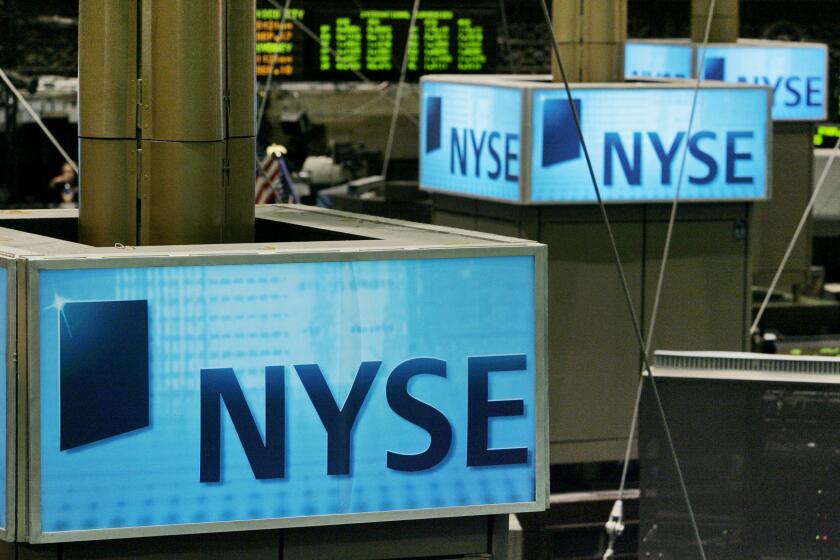Column: Yes, we can lower sky-high drug prices — other countries have done it
- Share via
Scott Gottlieb, head of the Food and Drug Administration, wasted no time in his opening remarks at a forum last week on high drug prices.
“The fact is that too many people can’t afford the medicines that they need,” he declared.
On that, I hope, we can all agree.
The trouble is doing something about it.
In all other developed countries, patients are protected by government authorities overseeing the market for prescription meds, ensuring that prices are reasonable while still allowing drug companies a fair profit.
In the United States, profit comes before public interest. There are no limits to how much can be charged for a prescription drug, particularly specialty drugs intended for the costliest illnesses.
As a result, the U.S. is by far the world’s biggest spender on pharmaceutical products, shelling out more than $1,026 annually per person, according to a 2015 report from the Organization for Economic Cooperation and Development.
That’s double the OECD average of $515 and considerably more than economic peers such as Germany ($678), France ($596) and Australia ($590).
Total U.S. spending on prescription drugs reached $450 billion last year, according to the research firm QuintilesIMS. It could be as high as $610 billion by 2021.
The FDA has no power to dictate pricing to drug companies. So Gottlieb said last week that the agency will focus on speeding up the approval process for generic meds so consumers have cheaper alternatives to branded drugs. It also wants to encourage greater competition among drug companies to lower prices.
“These moves would help,” said Peter Hilsenrath, a healthcare economist at the University of the Pacific. “But I wouldn’t expect really big things to come of it.”
He pointed out to me that generics already account for about 80% of U.S. drug sales, meaning that faster approval of generic meds wouldn’t exactly be a game changer for the marketplace.
“The big problem continues to be the prices of patented drugs,” Hilsenrath said.
Case in point: The same day that Gottlieb, a doctor when not running a federal agency, was calling for more affordable drug prices, the FDA gave its blessing to a new hepatitis C medication called Vosevi.
It’s the latest such drug from Gilead Sciences, which says Vosevi is for people who may not have seen strong results from the company’s other blockbuster hepatitis C pills, Harvoni and Epclusa.
The San Francisco Bay Area company plans to sell Vosevi for nearly $25,000 a bottle, with three bottles required for 12 weeks of treatment — a total cost of about $75,000.
The company is no stranger to envelope pushing when it comes to the cost of its drugs. In 2013, it introduced its first hepatitis C drug, Sovaldi, at a price of $1,000 a pill.
Gilead execs argued at the time that the drug cured 98% of hep C patients who took it, so a thousand bucks a pill was still cheaper than treatment for expensive complications the virus can cause, such as liver failure and cancer.
That may be true. But it’s important to remember that Gilead didn’t do the bulk of the research on Sovaldi. That was done by a pharmaceutical company called Pharmasset, which estimated in 2011 that a 12-week treatment regimen of its hep C drug would cost patients about $36,000.
Gilead paid $11.2 billion to acquire Pharmasset in 2012 and immediately decided $36,000 was much too cheap for a hepatitis cure. So it raised the price of a 12-week regimen to $84,000.
That’s the American way of drug pricing: Whatever the market will bear. Even if patients are treated as hostages.
The International Federation of Health Plans said last year that a one-month supply of Gilead’s Harvoni pill cost $32,114 on average in the United States. The same amount of the same drug cost $22,554 in Britain, $18,165 in Spain and $16,861 in Switzerland.
How do other countries do it? Simple, said Jason Doctor, an associate professor at USC’s School of Pharmacy. “Developed countries keep their drug prices down through price controls,” he said.
First and foremost, other nations offer their citizens universal health coverage, achieved through variations of single-payer insurance systems. Basically, that’s Medicare for everyone, not just seniors.
This allows the government to keep rising drug prices in check by using its market clout as the biggest buyer of prescription meds.
Incredibly, Medicare has no such negotiating power. The government-run program is forbidden by law from haggling with drug companies over prices.
Other nations also keep a close eye on what pharmaceutical companies charge in drugstores. In Canada, for example, the Patented Medicine Prices Review Board ensures that drug costs “are not excessive,” which means companies can’t gouge patients just because they can.
Canada also has a law requiring that breakthrough new drugs like Sovaldi can’t be priced higher than the median price around the world, ensuring that the price for Canadians is fair relative to what people elsewhere are paying.
Researchers have found that U.S. patients can pay as much as 16 times what people in other countries pay for the same drugs.
Free-market types will counter that price controls stifle innovation.
“If the revenue potential is not there, the company will not take the risk of spending $1 billion getting an early promising molecule to market,” said Patrick Sullivan, a pharmaceutical economist at Regis University in Denver.
There’s something to that. Then again, how much innovation are big drug companies really responsible for? Pharmasset took most of the risk developing a promising hepatitis C drug. It was only after Gilead acquired the company that corporate greed became the driving force in pricing.
Also, why should we rely so heavily on innovation by the private sector? Why not restore public-sector science to prominence with a boost in grant-making by the National Institutes of Health?
Such grants could be funded via potentially billions of dollars in savings from allowing Medicare to negotiate public-sector drug prices.
Consider this: The discovery of insulin in the early 20th century was one of the most important moments in modern medicine. It wasn’t done by a private company. It was primarily the work of a Canadian scientist, Frederick Banting, who would go on to share the Nobel Prize in 1923.
Banting and two colleagues subsequently sold the patent for insulin to the University of Toronto for just $3. The university in turn allowed drug companies to manufacture insulin royalty-free.
It wasn’t about profit. It was about what was best for society.
Today, drug companies see the global diabetes epidemic as an enormous business opportunity. Insulin prices have more than tripled in recent years.
It’s not about what’s best for society. It’s about profit.
There’s our problem.
David Lazarus’ column runs Tuesdays and Fridays. He also can be seen daily on KTLA-TV Channel 5 and followed on Twitter @Davidlaz. Send your tips or feedback to david.lazarus@latimes.com.
MORE FROM DAVID LAZARUS
Revised GOP healthcare bill succeeds at making things even worse
If you’re on a spouse’s health plan, what happens if the worst should happen?
Chiropractic treatment, a $15-billion industry, has its roots in a ghost story
More to Read
Inside the business of entertainment
The Wide Shot brings you news, analysis and insights on everything from streaming wars to production — and what it all means for the future.
You may occasionally receive promotional content from the Los Angeles Times.











